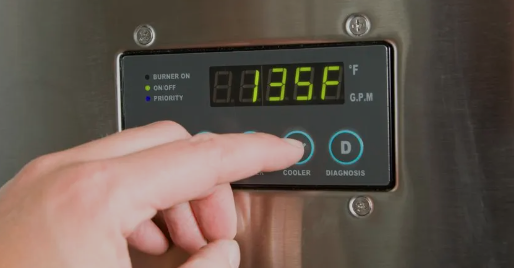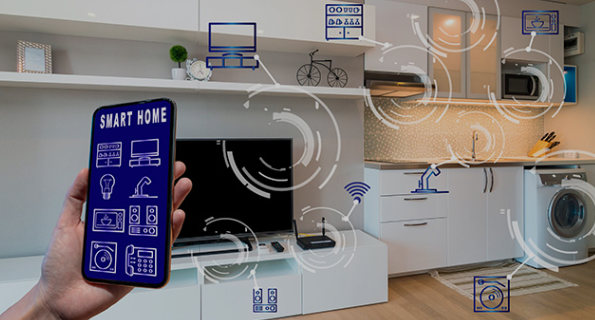Water Softeners

Water softeners are devices designed to remove or reduce the concentration of hard minerals, primarily calcium and magnesium ions, from water. Hard water can lead to various issues such as scale buildup in pipes and appliances, reduced efficiency of soaps and detergents, and potential damage to water-using appliances. Water softeners work by exchanging the calcium and magnesium ions with sodium or potassium ions through a process called ion exchange.
1 :A. Definition of Water Softeners
Water softeners are household appliances or systems that are designed to remove or reduce the concentration of hardness minerals in water, particularly calcium and magnesium ions. The process involves an ion exchange where calcium and magnesium ions are replaced with sodium or potassium ions.
B. Significance of Softening Water
- Appliance Longevity: Water softeners are employed to extend the lifespan and efficiency of household appliances, such as water heaters, dishwashers, and washing machines, by preventing scale buildup.
- Improved Cleaning: Softened water enhances the effectiveness of soaps and detergents, resulting in improved cleaning of clothes, dishes, and surfaces.
- Prevention of Scale Deposits: The reduction of hardness minerals helps prevent the formation of scale deposits in plumbing and appliances, reducing maintenance costs.
- How Water Softeners Work
2 :A. Ion Exchange Process
- Resin Tank: The heart of a water softener is the resin tank filled with resin beads. These beads are typically made of polystyrene and have a negative charge.
- Ion Exchange: Hard water enters the resin tank, and the calcium and magnesium ions in the water are attracted to the negatively charged resin beads. In exchange, sodium or potassium ions are released into the water.
- Regeneration: Over time, the resin beads become saturated with calcium and magnesium ions. During the regeneration cycle, a brine solution (sodium chloride or potassium chloride) is flushed through the resin tank, replacing the accumulated hardness minerals and preparing the resin beads for another cycle.
B. Salt-Based vs. Salt-Free Water Softeners
- Salt-Based Water Softeners: These systems use ion exchange with salt to remove hardness minerals. While effective, concerns about sodium in the softened water and environmental impact have led to the exploration of alternatives.
- Salt-Free Water Softeners: These systems, such as template-assisted crystallization (TAC) or citric acid systems, do not remove calcium and magnesium ions but alter their form to prevent scale buildup. They are considered “conditioners” rather than softeners.
3 :Types of Water Softeners
A. Salt-Based Water Softeners
- Single-Tank Systems: Simple and cost-effective, but regeneration can lead to a temporary interruption of soft water supply.
- Dual-Tank Systems: Continuous soft water supply by alternating between two tanks during the regeneration cycle.
- Time-Initiated vs. Demand-Initiated Regeneration: Time-initiated systems regenerate at set intervals, while demand-initiated systems regenerate based on water usage, optimizing salt and water consumption.
B. Salt-Free Water Softeners
- Template-Assisted Crystallization (TAC): Attracts hardness minerals and forms microscopic crystals that do not adhere to surfaces.
- Citric Acid Systems: Use citric acid to bind with calcium and magnesium ions, preventing scale formation.
4. Benefits and Drawbacks
A. Benefits of Water Softeners
- Extended Appliance Lifespan: Reducing scale buildup improves the efficiency and longevity of water-using appliances.
- Improved Cleaning: Softened water enhances the performance of soaps and detergents, leading to cleaner dishes, clothes, and surfaces.
- Reduced Maintenance Costs: Prevention of scale deposits in plumbing and appliances reduces the need for repairs and maintenance.
B. Drawbacks and Considerations
- Environmental Impact: The use of salt-based water softeners can contribute to increased sodium levels in wastewater, potentially impacting the environment.
- Ongoing Costs: Salt-based water softeners require periodic replenishment of salt, adding to the ongoing operational costs.
- Wastewater Generation: The regeneration process generates wastewater, and its disposal or treatment needs to be considered.
5. Environmental Impact
A. Sodium Discharge
- Concerns: The discharge of sodium chloride from salt-based water softeners raises environmental concerns, particularly in areas where wastewater is discharged into natural water bodies.
- Alternative Regeneration Agents: Exploring alternative regeneration agents, such as potassium chloride, can mitigate the environmental impact of sodium discharge.
B. Energy Consumption
- Regeneration Process: The energy-intensive regeneration process of some water softeners contributes to their environmental footprint.
- Energy-Efficient Models: Advancements in technology have led to the development of more energy-efficient water softeners.
6. Maintenance Considerations
A. Regular Inspections
- Resin Tank Inspection: Regular checks on the resin tank ensure its proper functioning and identify any potential issues.
- Brine Tank Maintenance: Cleaning and refilling the brine tank are essential tasks to maintain the effectiveness of salt-based systems.
B. Salt Management
- Choosing the Right Salt: Selecting the appropriate type of salt (rock, solar, or evaporated) and quality is crucial for optimal performance.
- Monitoring Salt Levels: Regularly checking and replenishing salt levels in the brine tank ensures continuous soft water production.
7. Alternatives to Traditional Water Softeners
A. Electronic Water Conditioners
- Electromagnetic Devices: Emit electromagnetic waves to alter the structure of hardness minerals, preventing scale buildup.
- Electronic Descalers: Use electronic pulses to prevent scale formation without removing calcium and magnesium ions.
B. Template-Assisted Crystallization (TAC)
- Salt-Free Alternative: TAC systems offer a salt-free solution by preventing scale formation through crystallization.
C. Citric Acid Systems
- Environmentally Friendly: Citric acid systems provide a salt-free option that is environmentally friendly.
8. Conclusion
In conclusion, water softeners play a crucial role in addressing the challenges posed by hard water. While traditional salt-based water softeners are effective in removing hardness minerals, they come with environmental considerations. Salt-free alternatives, such as template-assisted crystallization and citric acid systems, provide eco-friendly options for those concerned about sodium discharge. As technology advances, electronic water conditioners offer innovative solutions to prevent scale buildup without the need for salt. When choosing a water softener, it is essential to weigh the benefits, drawbacks, and environmental impact to make an informed decision that aligns with both household needs and environmental sustainability.




